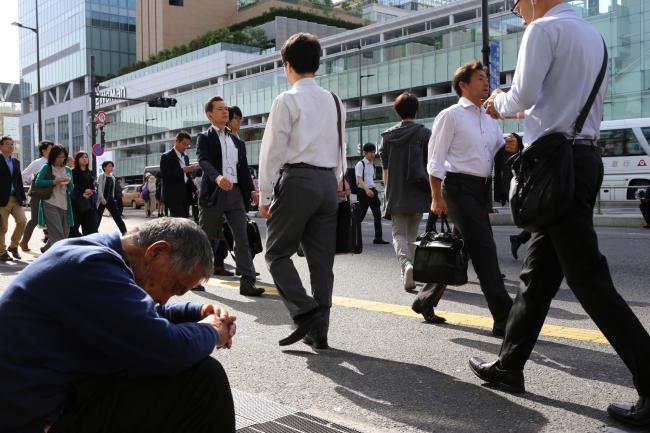(Bloomberg) -- Japan’s tightest labor market in decades just got even tighter, driving companies to hire more workers in full-time, permanent positions. That’s positive news for the Bank of Japan as it struggles to generate 2 percent inflation. Consumer prices in Tokyo, a leading indicator for the nation, rose more than expected after two months of slower increases.
Key Takeaways
The employment data released on Friday point to stronger upward pressure on wages, which so far haven’t responded as expected to the super-tight labor market. As companies struggle to find workers they’re hiring more staff on permanent, full-time contracts, which generally means higher pay and benefits. A job-applicant ratio at a 44-year high also points in the right direction for wages and inflation.
Still, challenges to the economy abound. The export-dependent nation faces fallout from global trade tensions and the slowing of growth in China. Japan’s factory output fell slightly in May after rising for three consecutive months.
More from other economists
- The link between unemployment and wages isn’t as strong as it was in the past, and the falling jobless rate may have only a limited impact on pay, said Hisashi Yamada, senior economist at the Japan Research Institute.
- "As for regular workers at big companies, wages are not going up much because management and labor unions are aware of the risk that something like the Lehman shock may happen again," Yamada said. "Once companies raise wages, they won’t have room to deal with a shock like that. That’s why they are saving cash."
- "Tokyo CPI was better than I expected," Atsushi Takeda, an economist at Itochu Corp. "In the end, the stronger yen from the start of the year had been a factor that weighed down on prices, but that pressure appears to have come full circle."
Details
- The month-on-month decline in factory output in May was mainly the result of lower auto production because of fewer business days during the month, the economy ministry said.
- Year-on-year factory production increased 4.2 percent (forecast +3.4 percent), compared with a 2.6 percent rise in April.
- Output is projected to rise 0.4 percent in June from May, and 0.8 percent in July.
(Recasts to focus on jobs data, adds details throughout, economist comments.)
